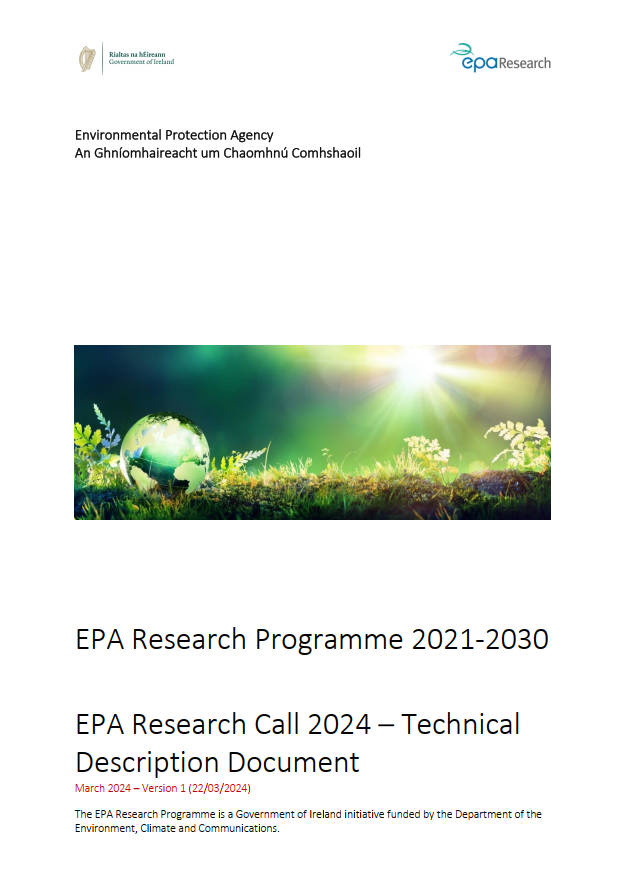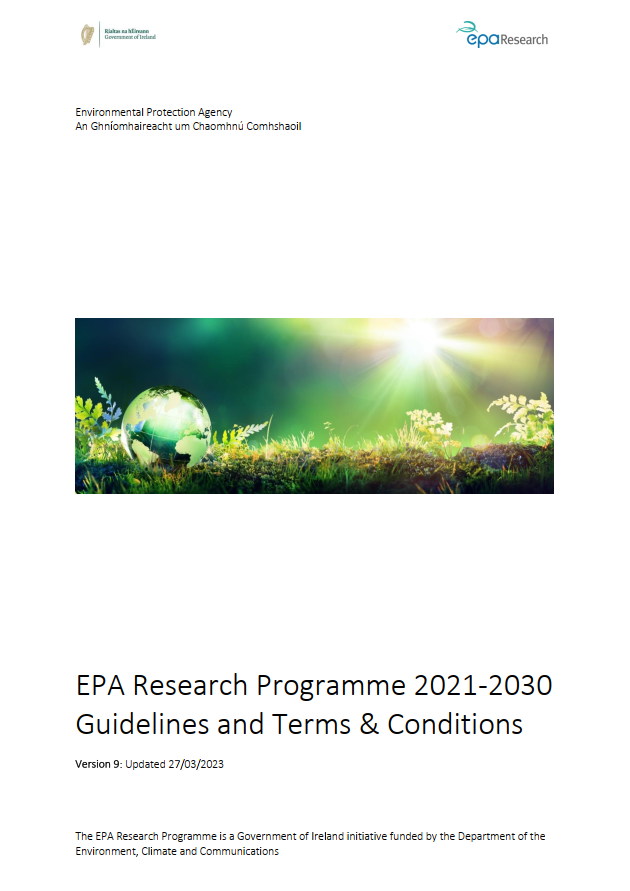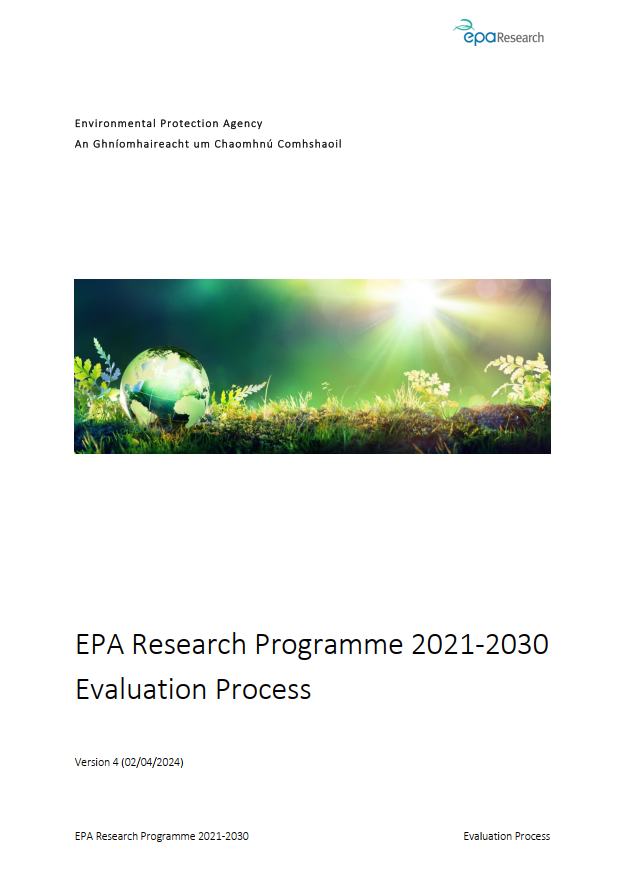Latest Research Publications

Research 459: Roadside Emissions in Dublin: Measurements and Projections (REDMAP)
Authors: Srinath Mahesh, Adam Clarke, Ben Fowler, Rebecca Rose, Aonghus McNabola, William Smith, David Timoney, Jasmine Wareham, Paul Willis and Bidisha Ghosh, September 2024
Year: 2024
In Ireland, transport accounts for about 20% of emissions, and 95.8% of these emissions are caused by on-road vehicles. Although several pieces of legislation and policies have been developed to tackle this issue the impact of these in reducing emissions have been lower than originally anticipated. A key challenge is the discrepancy between vehicle type approval tests and real-world emissions from vehicles powered by fossil fuels. This research addresses a knowledge gap about trends in the emission factors of vehicles that conform to different emission standards, use varying fuel types and have high mileage. Real-world measurement techniques were used to quantify emissions from over 130,000 vehicles, including cars, light goods vehicles, heavy goods vehicles and buses. Integrating the data into a dispersion model helped established a more accurate representation of air pollution levels in Dublin. It recommends low emission zones, vehicle restrictions and phasing out older vehicles.

EPA Research Climate Fellowships Call 2024 – Technical Description Document
Authors: EPA, August 2024
Year: 2024
This document provides the Technical Description for the Environmental Protection Agency (EPA) Research Call 2024. Applicants should read this document carefully and also consult the other call documentation: (i) EPA Research 2021 - 2030 Guidelines and Terms & Conditions; (ii) EPA Research Evaluation Process.

Thematic Research Priorities 2024 - 2026
Authors: EPA, July 2024
Year: 2024
As part of its research strategy, EPA Research 2030, the EPA will carry out a detailed consultation to identify key research areas and actions, including emerging challenges and knowledge requirements, to inform the direction of the EPA Research Programme on a three-year cycle. The Thematic Research Priorities have now been updated for the period 2024 to 2026.

Research 458: A Critical Analysis of Ireland’s Circular Material Use Rate (CAIR)
Authors: Jack McCarthy, Colman McCarthy, Carlos Pablo Sigüenza, Gergo Suto, Colum Gibson, Claire Downey and Adam Boland , July 2024
Year: 2024
Ireland has registered a relatively poor score in terms of the Circular Material Use Rate (CMUR) – a key circular economy metric of the European Union. Ireland’s policy ambitions are to surpass the EU average in this metric by 2030. The aims of the CAIR (a Critical Analysis of Ireland’s circular material use Rate) project were to firstly identify factors driving Ireland’s relatively low CMUR performance and secondly to identify actions through which Ireland’s CMUR score could be improved. The research activities included an interrogation of how the CMUR metrics function, analysis of the data used, a comparison of the data and statistical profile of Ireland with three other Member States, and the development of proposals for improving Irelands CMUR score.

Research 457: Towards a Climate-neutral Land Sector by 2050 Scenarios Quantifying Land-Use & Emissions Transitions Towards Equilibrium with Removals (SeQUEsTER)
Authors: David Styles, Colm Duffy, Remi Prudhomme, George Bishop, Mary Ryan and Cathal O’Donoghue, June 2024
Year: 2024
Ireland’s agriculture, forestry and other land use (AFOLU) sector accounts over 40% of national greenhouse gas (GHG) emissions. The Climate Action and Low Carbon Development Act 2021 commits Ireland to reach a legally binding target of net-zero GHG emissions by 2050, yet emissions from this sector continues to rise. Globally, it is assumed that land management will provide a net carbon sink to offset residual emissions from agriculture and other sectors. However, Ireland’s land sector is a large net emitter of carbon dioxide (CO2) owing to large areas of drained organic soils and low afforestation rates relative to forest harvest rates. SeQUEsTER uniquely applied a back-casting approach to identify what “solutions” to net zero could look like for the agriculture and land sector.
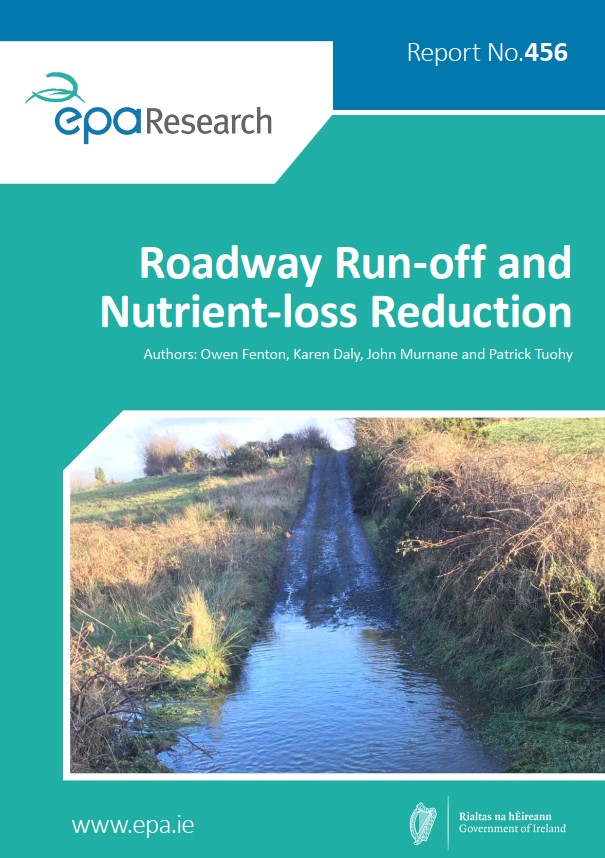
Research 456: Roadway Run-off and Nutrient-loss Reduction
Authors: Owen Fenton, Karen Daly, John Murnane and Patrick Tuohy, June 2024
Year: 2024
The Nitrates Directive aims to protect water quality across Europe by preventing nutrients from agricultural sources, including livestock manures and other fertilisers, from polluting ground and surface waters, and by promoting good farming practices. Ireland’s Nitrates Action Programme states “There shall be no direct runoff of soiled water from farm roadways to waters”. Despite existing regulation, there has been minimal research in Ireland pertaining to the source, content, pathway, mobilisation and impact of roadway runoff. The Roadrunner project reviewed mitigation measures to treat roadway runoff, developed an on-farm visual tool to find and document connectivity between roadway runoff and waters, and provided the evidence base to define roadway runoff as a unique sub-component of the nutrient transfer continuum.
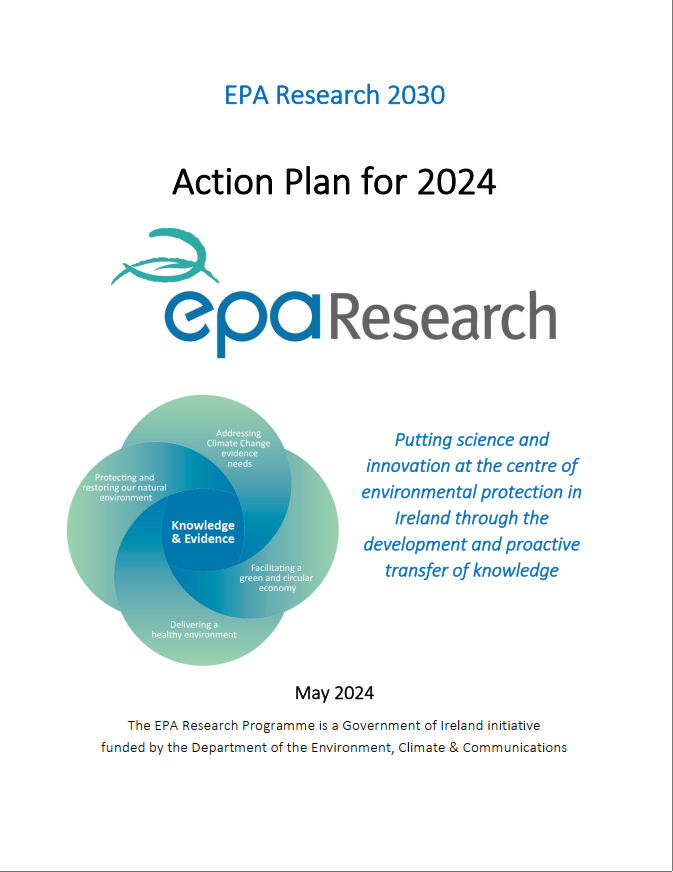
2024 EPA Research 2030 Action Plan
Authors: EPA, May 2024
Year: 2024
Summary: This Action Plan 2024 provides a guide for the planned activities of the EPA Research Programme in 2024.
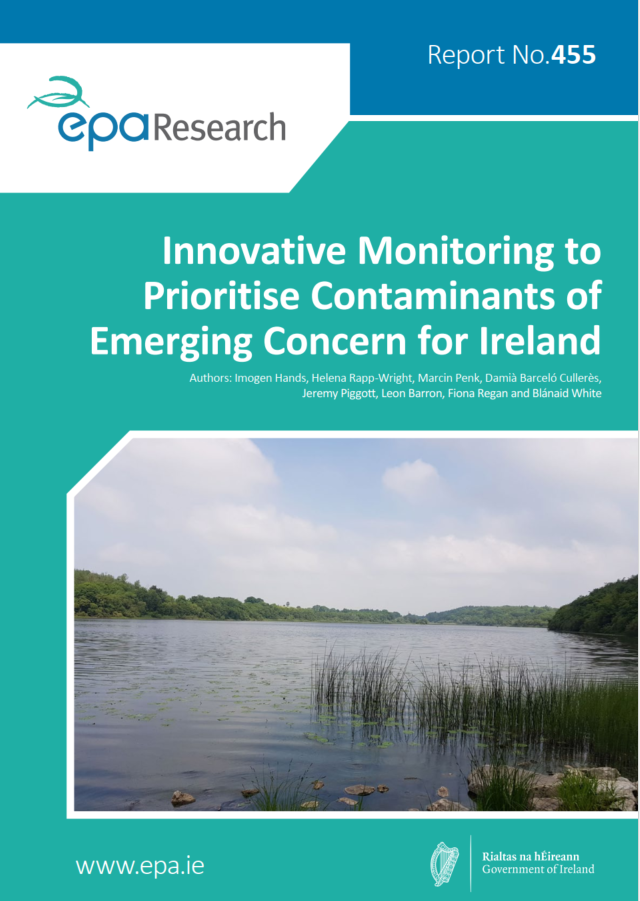
Research 455: Innovative Monitoring to Priorities Contaminants of Emerging Concern for Ireland (IMPACT)
Imogen Hands, Helena Rapp-Wright, Marcin Penk, Damià Barceló Cullerès, Jeremy Piggott, Leon Barron, Fiona Regan and Blánaid White, April 2024
Year: 2024
Contaminants of Emerging Concern (CECs) can be defined as “any synthetic or naturally occurring chemical or any microorganism that is not commonly monitored in the environment but has the potential to enter the environment and cause known or suspected adverse ecological and/or human health effects”. This research provides a comprehensive insight into the occurrence and fate of CECs in wastewater treatment effluent on entry to Irish receiving waters. Two wastewater treatment plants (WWTPs), one urban and one rural were monitored for one year to identify the temporal and spatial occurrence of more than 100 CECs in the aquatic environment and the WWTPs influents and effluents. This work allows contaminants that are not efficiently removed during treatment of municipal effluents to be highlighted and enables an evidence-based prioritisation list of CECs to be developed in Ireland.
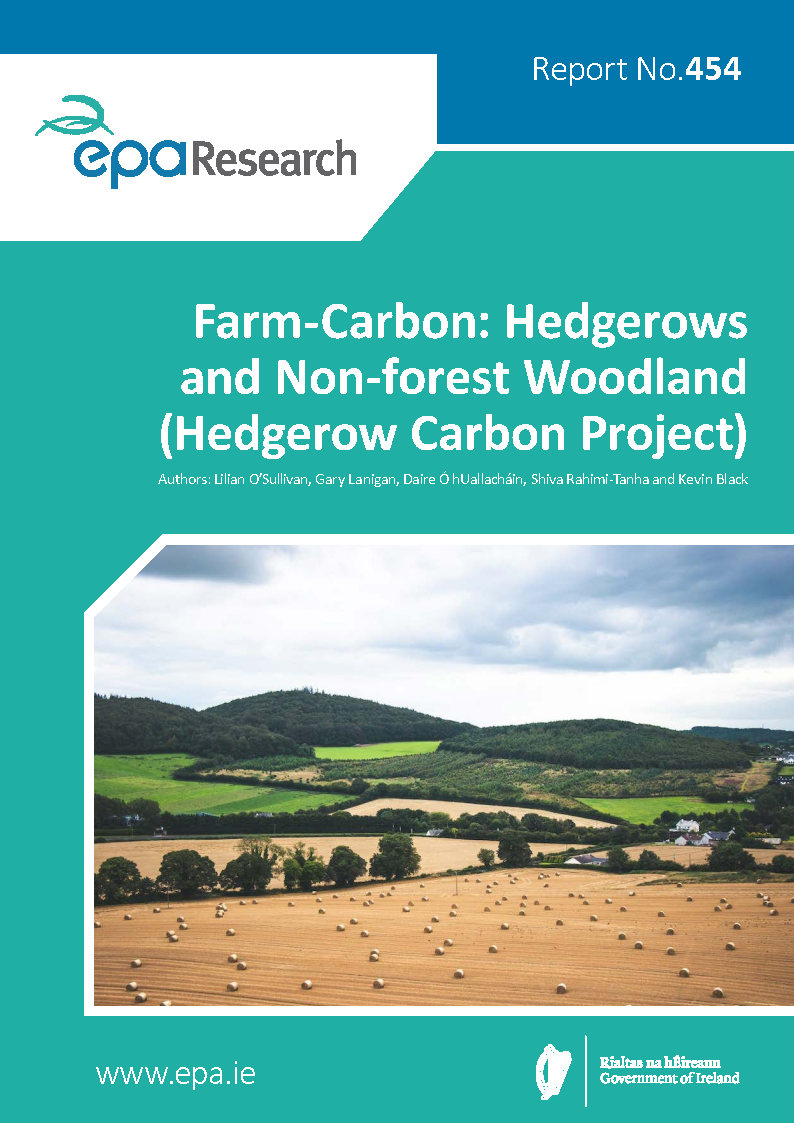
Research 454: Farm-Carbon: Hedgerows and Non-forest Woodland (Hedgerow Carbon Project)
Authors: Lilian O’Sullivan, Gary Lanigan, Daire Ó hUallacháin, Shiva Rahimi-Tanha and Kevin Black, March 2024
Year: 2024
The EU aims to be climate neutral by 2050. Central to this ambition is land management that supports carbon sequestration, and enhancement of carbon sinks or the reversal of their emissions. Current national greenhouse gas emission inventory submissions to the United Nations Framework Convention on Climate Change show that the land use, land use change and forestry (LULUCF) sector is a net source of emissions in Ireland. However, emissions and removals are not currently disaggregated in national emission inventory estimates. Currently, hedgerows are not explicitly accounted for in national inventory reports.
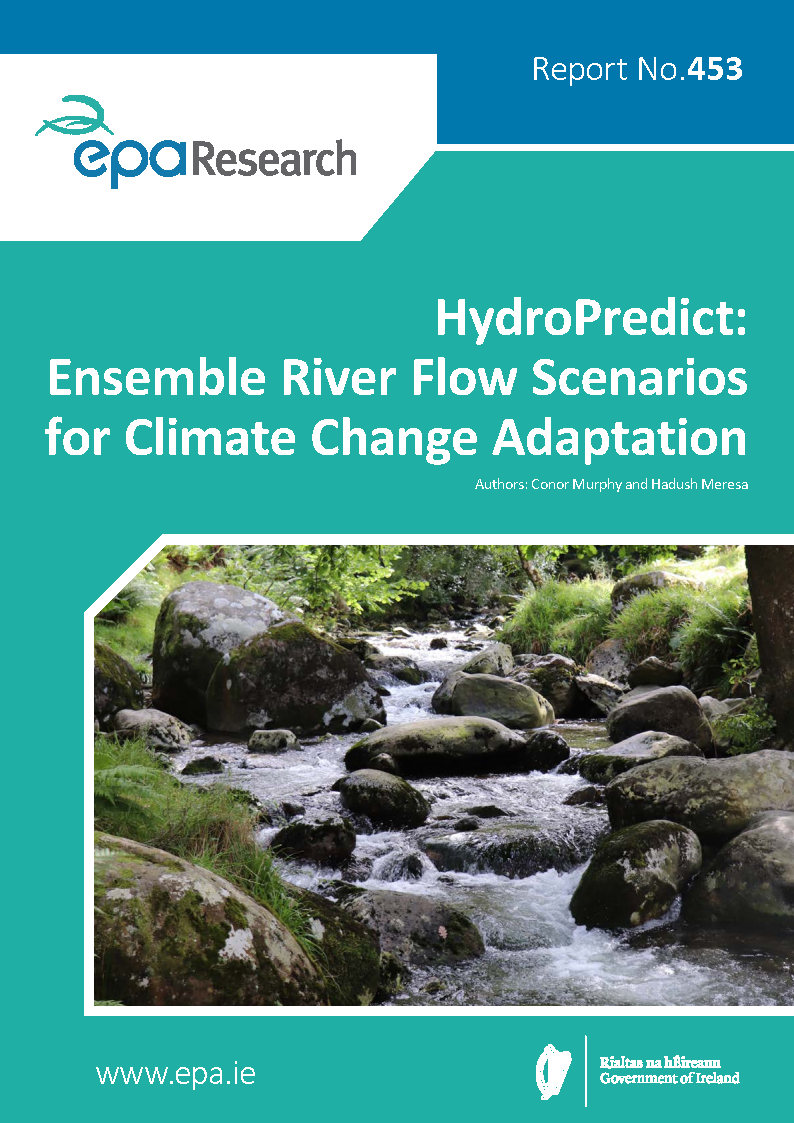
Research 453: HydroPredict: Ensemble River Flow Scenarios for Climate Change Adaptation
Authors: Conor Murphy and Hadush Meresa, March 2024
Year: 2024
Higher greenhouse gas emissions are associated with large reductions in average summer and annual low flows in rivers. Changes in meteorological droughts in Ireland are driven by a transition to wetter winters and drier summers, together with increased evapotranspiration losses during summer and late spring months, leading to more frequent spring and summer droughts. The magnitude of future drought changes depends on future greenhouse gas emissions, with the most substantial changes found for higher emissions. Adapting to climate change in the water sector should place an increased emphasis on addressing the changing nature of droughts, especially across sensitive sectors. Using the latest climate models and emissions storylines, this research project assessed the projected impacts of climate change on flow conditions and droughts across 37 river catchments in Ireland.
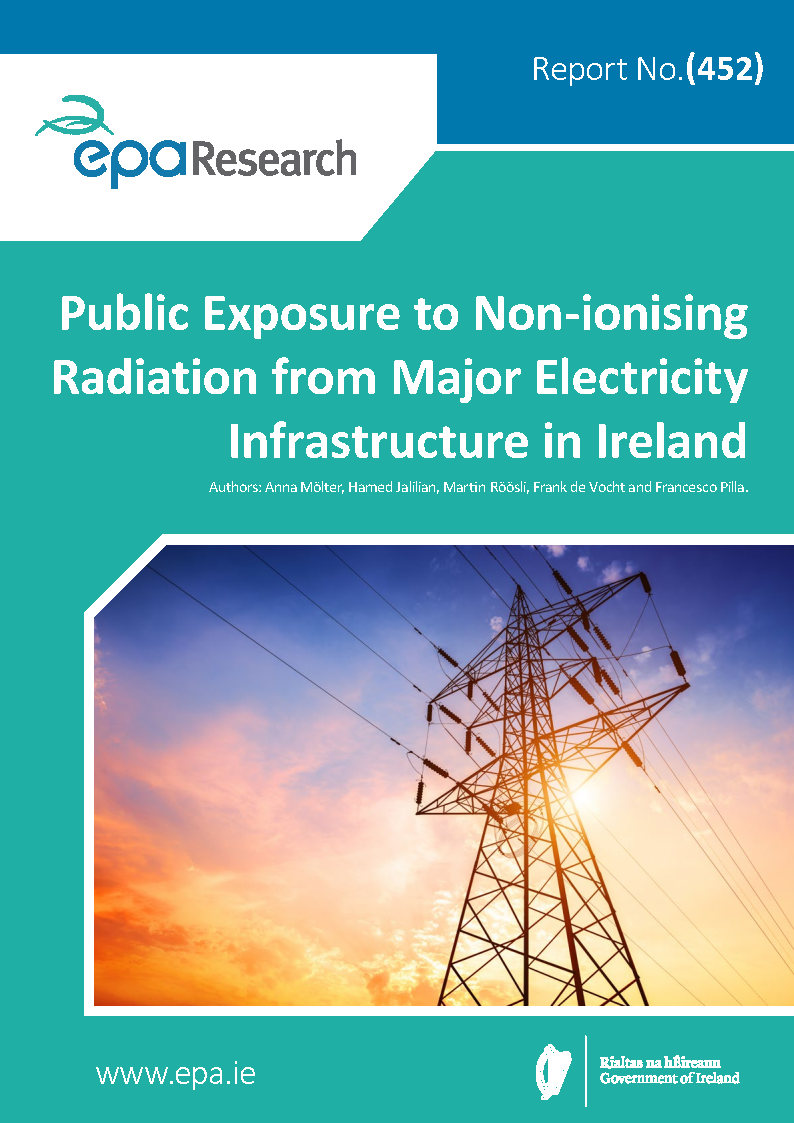
Research 452: Public Exposure to Non-ionising Radiation from Major Electricity Infrastructure in Ireland
Authors: Anna Mölter, Hamed Jalilian, Martin Röösli, Frank de Vocht and Francesco Pilla, March 2024
Year: 2024
Major electricity infrastructure, such as high-voltage power lines, transformer stations and substations, emits non-ionising radiation in the form of extremely low-frequency electromagnetic fields (ELF EMFs). Potential health effects associated with long-term exposure to ELF EMFs have been a concern since the late 1970s. However, epidemiological studies of health risks of ELF EMF exposure have reported varying results, and a causal relationship has not been established. This research report presents a review on the published literature in relation to populations exposure to ELF EMFs, epidemiological studies on associated health risks, current EU policies, monitoring strategies, methods to reduce exposure and strategies for risk communication.
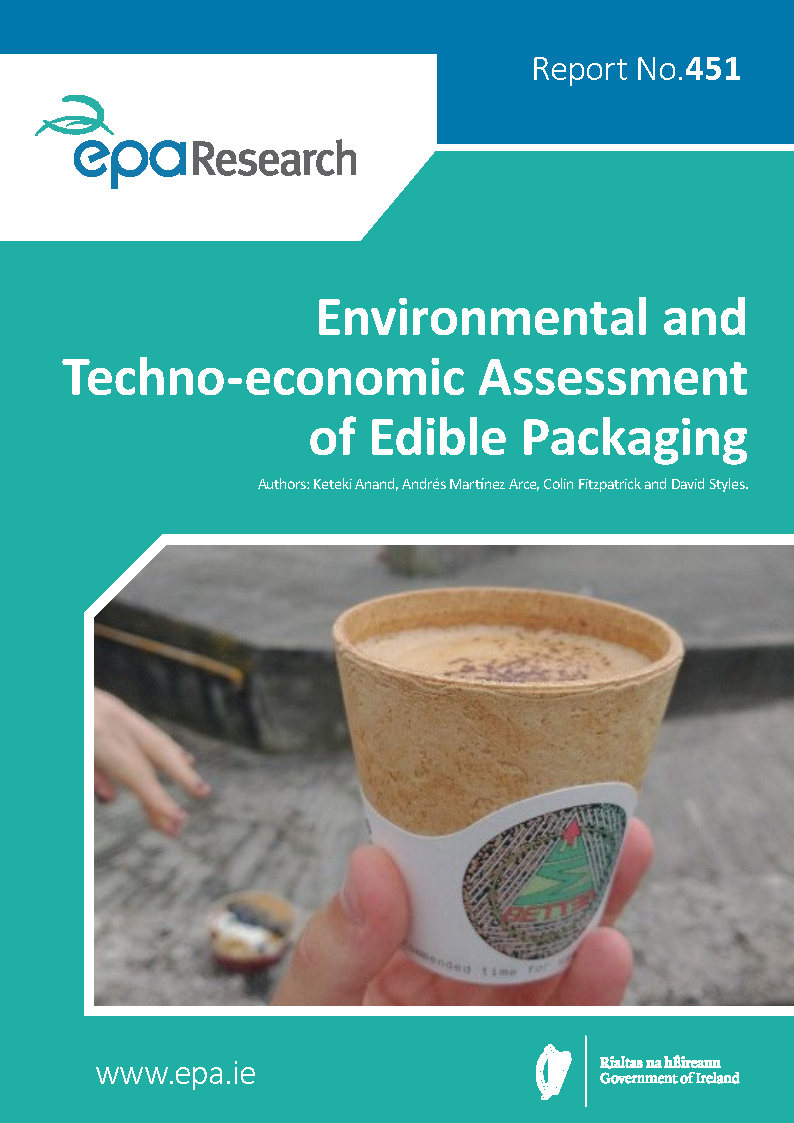
Research 451: Environmental and Techno-economic Assessment of Edible Packaging
Authors: Keteki Anand, Andrés Martínez Arce, Colin Fitzpatrick and David Styles, March 2024
Year: 2024
It is estimated that 550,000 cups per day are used in the Irish market alone, and that this could increase to an annual total of 300 million cups per year by 2025. Although there is a common perception among consumers that paper cups are recyclable, and thus a sustainable option, this is not necessarily true. These cups are lined with plastic, which is difficult to separate from the paper, and most paper cups are sent to residual waste streams for landfill or incineration. The concept of edible packaging has the potential to help address littering and waste management challenges from single-use disposable cups. EAT-Packaging undertook a life cycle assessment across a range of relevant cup types and engaged with national stakeholders to develop scenarios to identify where, when, and how edible cups (or alternative options) could reduce environmental impact for the functional unit of a cup containing a single drink.
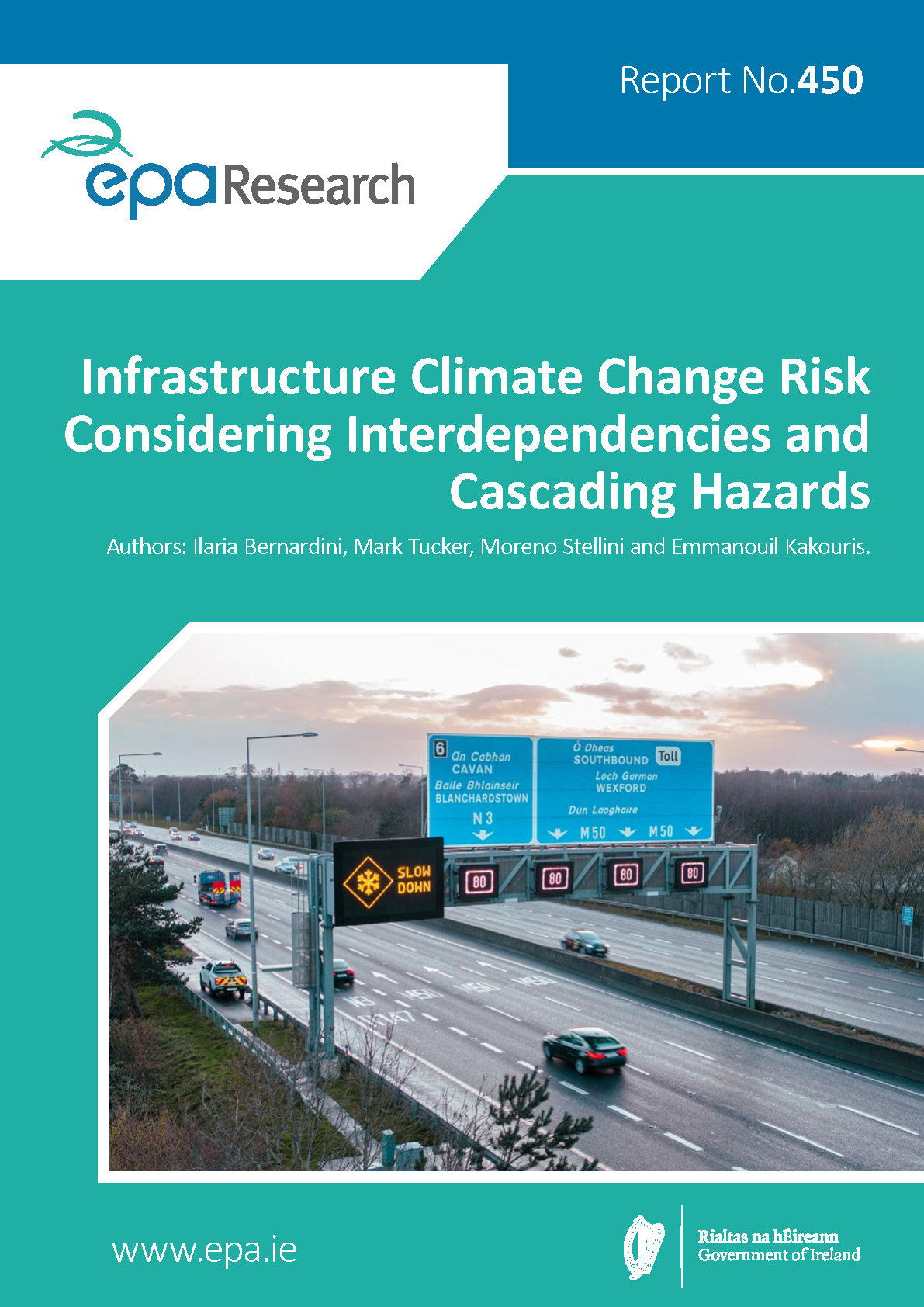
Research 450: Infrastructure Climate Change Risk Considering Interdependencies and Cascading Hazards
Authors: Ilaria Bernardini, Mark Tucker, Moreno Stellini and Emmanouil Kakouris, February 2024
Year: 2024
Extreme weather events such as storms, landslides, river floods and coastal phenomena have threatened and damaged many different regions across Ireland. These events, while rare and often short-lived, can have a devastating impact on critical infrastructure systems. As a result of climate change, these events are becoming more frequent and more intense, affecting not only physical infrastructure but also the environment and society as a whole. Using risk-based approaches in assessing the impacts of extreme weather events and climate change is a well-established method of identifying the most vulnerable infrastructure, assessing the risks posed to that infrastructure and developing strategies to minimise those risks. This report presents an overarching risk assessment methodology for assessing risks posed to critical infrastructure by climate change.
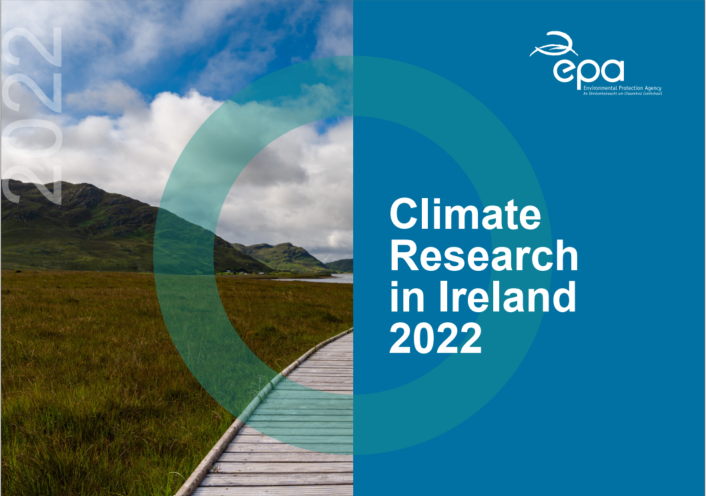
2022 Climate Research Highlights
The Climate Research Coordination Group (CRCG) supports and promotes coordination and knowledge exchange between state bodies involved in funding climate research in Ireland., February 2024
Year: 2024
This report has been prepared by the EPA on behalf of the Climate Research Coordination Group



